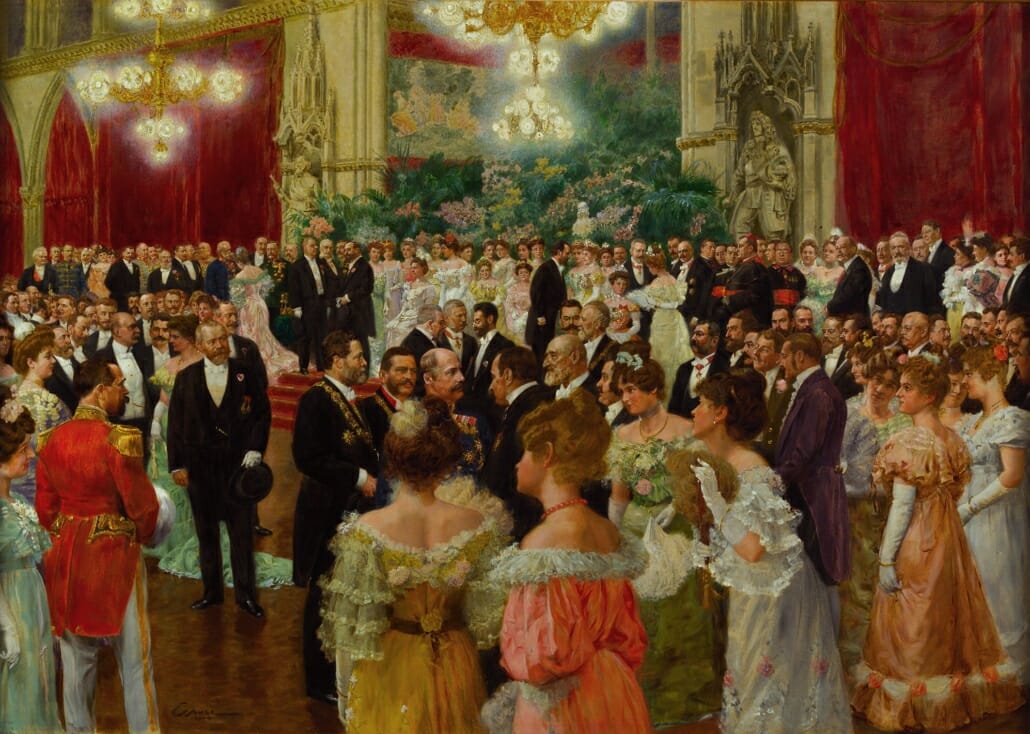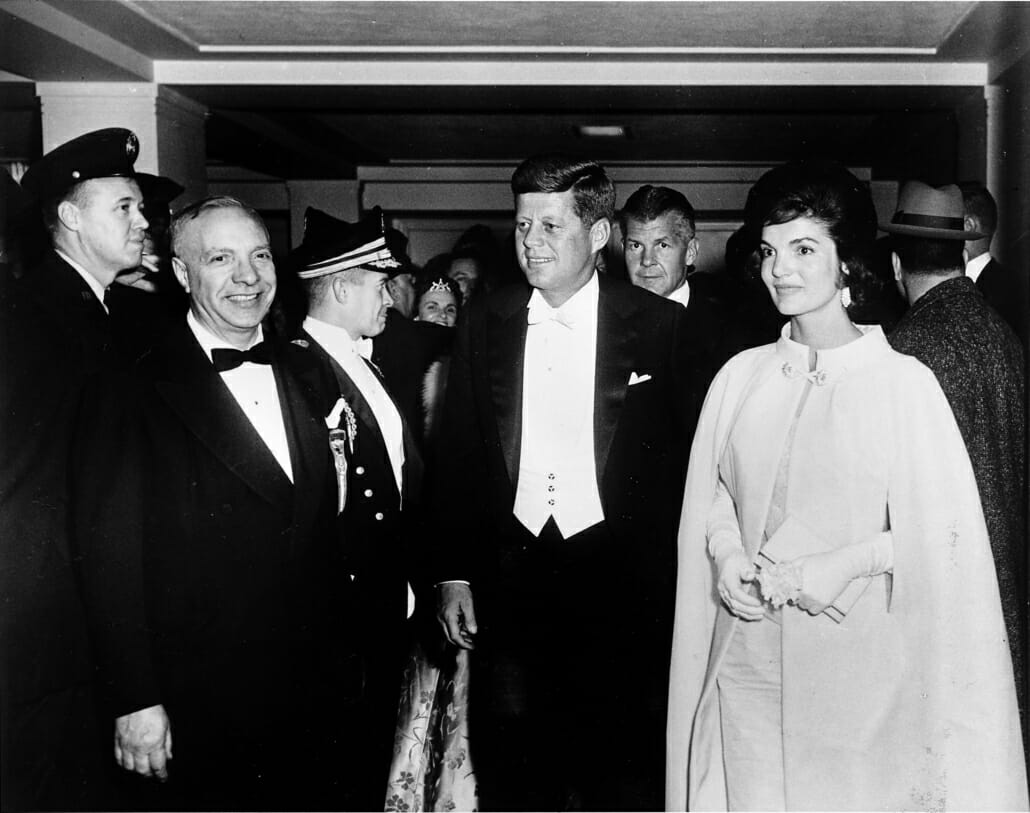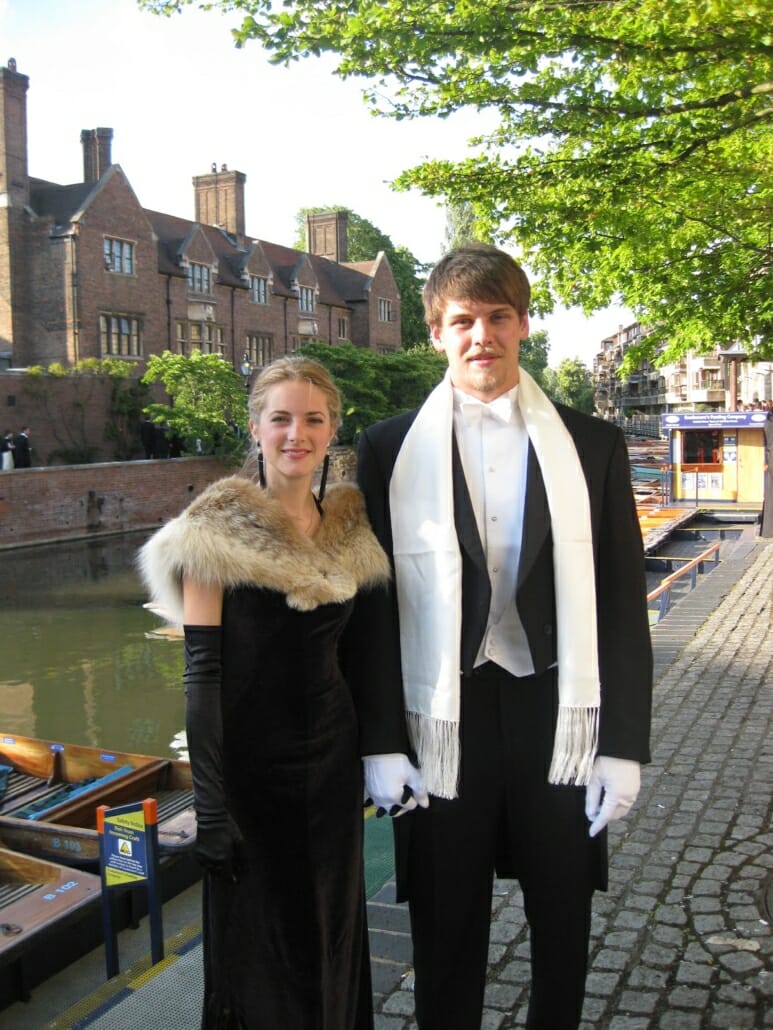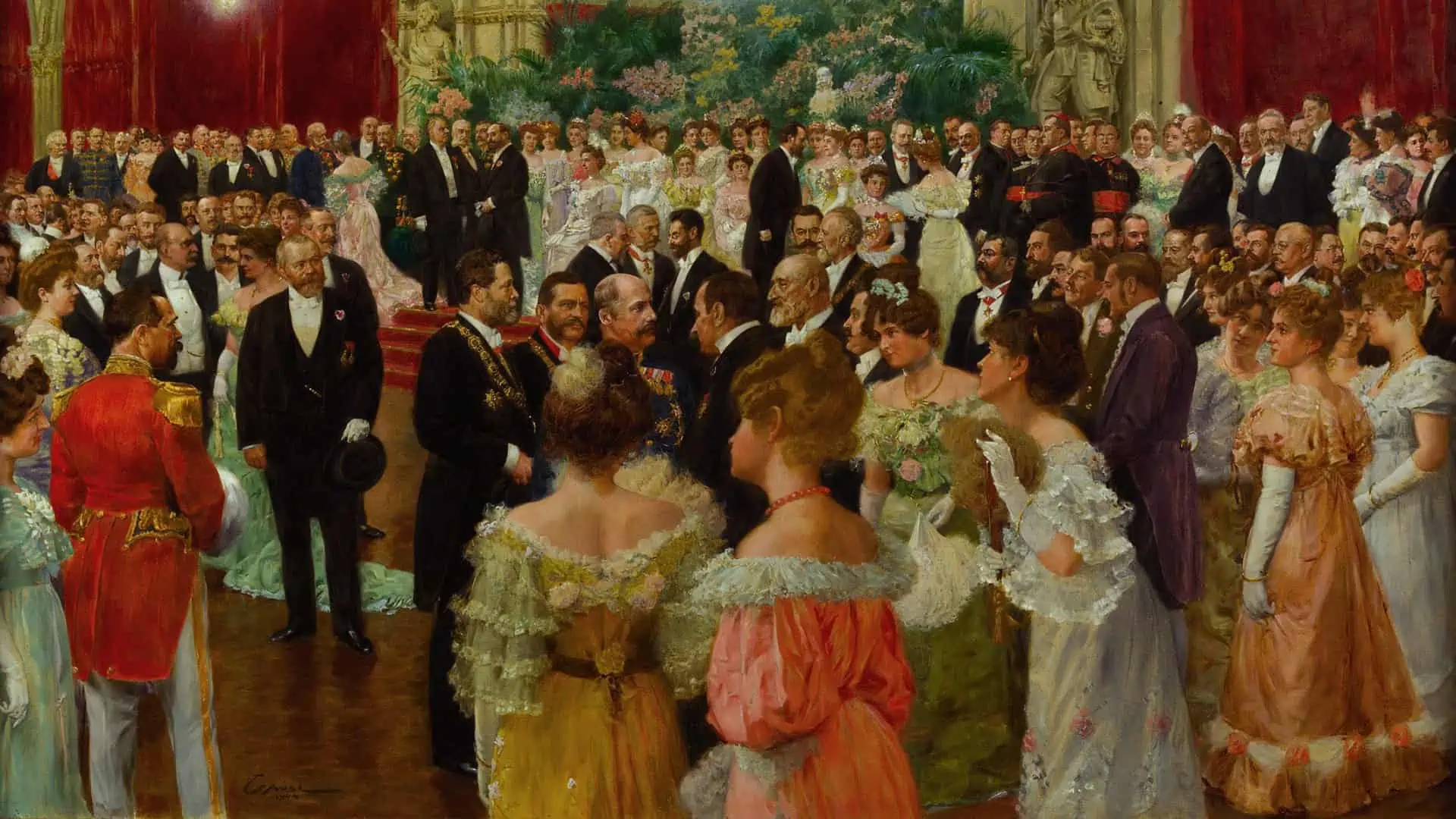Men’s evening wear may play a starring role in enhancing its wearer but its role in enhancing a special occasion is very much a supporting one. Echoing a romantic chivalry of days gone by, the black-and-white uniform is deliberately designed to act as an unassuming backdrop for the radiant couture and sensuous décolletage displayed by guests of the fairer sex.

Conventional White Tie Dress Code For Women
As society’s most formal dress code, White Tie maintains relatively strict requirements for feminine attire. In the United States, Emily Post’s Etiquette says simply that women should wear a “formal evening gown” while Letitia Baldrige’s New Manners for New Times recommends “a full-skirted ballgown, lots of jewelry but never too much, fur wrap, long white gloves.”
Debrett’s, the UK’s most definitive source of social protocol, says in its New Guide to Etiquette and Modern Manners that “Women wear long, formal evening dresses. Short frocks, no matter how glamorous, are not acceptable and trousers should not even be considered. These rules are particularly strictly adhered to in Scotland.”

If the evening is to include rigorous dancing the book advises against strapless dresses, big jewelry and unrestrained long hair and suggests comfortable shoes. Evening gloves remain correct although they are rarely used by young women and “are no longer compulsory” according to the Debrett’s online etiquette guide.

Conventional Black Tie Dress Code For Women
When it comes to black-tie attire, the Debrett’s book notes that for women this dress code today “is infinitely more complicated, as its presence on a card can signify any level of dress, ranging from a little lycra number to just sub-white-tie levels of splendor. The old clearly defined distinctions between dinner and dance dresses have largely disappeared and their place has been taken merely by confusion.” The book’s subsequent advice is equally applicable on either side of the Atlantic:
Thus it is important to ascertain from the hostess what dress she is expecting. Good hostesses could follow the lead of a well-known duchess, who sends a written invitation to friends that includes a few short lines dispelling any dress confusion: ‘Saturday night is black tie, but palazzo pants will be absolutely fine.’
The invitation itself will also give clues. A simple drinks party from 6:30 to 8:30 will require only a little black dress, while a more lavish affair to celebrate someone’s twenty-first, which consists of drinks, dinner, and dancing, needs a much grander dress. As an inveterate party-going friend says: ‘The greater the effort of the hostess, the greater the level of formality expected of the guest.’
The choice of a long or short dress can also be vexing. Traditionally, long is more formal than short, but these distinctions are fast disappearing . . . The choice today is largely based on what suits the wearer, her legs and her relative age. Long is the preferred comfortable option of older women, while young girls invariably feel more suited to short. However, a long dress or skirt remains the safest option for all, as it is always special, and appropriate to any black tie event grander than a cocktail party. Best jewels, with plenty of sparklers, can be worn, but obviously, tiaras are inappropriate.
Online, the Debrett’s experts add that the dress need not be black and if it is short it must not be “too short”.
Stateside etiquette authorities provide much less specific guidelines. Emily Post’s Etiquette dictates only a “formal evening dress or short, dressy cocktail dress” although it also notably limits the appropriateness of dressy separates to Black Tie Optional affairs. Letitia Baldrige’s book offers a moderately more detailed prescription:
- Floor-length, short, or three-quarter-length evening gown; evening sandals or pumps; and an evening bag of silk, satin, peau de soie, velvet, or brocade material
- Jewelry – same as for cocktail party [sparkly earrings and bracelet or simple button earrings and a very simple gold or silver necklace], only slightly more of it
- A fur, if you have one
- Longer is better, but always keep it below knee length
- Don’t be afraid to be bold and add color to your dress
Explore this chapter: 9 Advanced Black Tie & Tux Coverage
- 9.1 Black Tie, Tuxedo & White Tie Evening Wear Glossary
- 9.2 Black Tie Dress Code for Women – Ladies’ Evening Wear
- 9.3 Tuxedo Black Tie Myths & Merits Debunked
- 9.4 Orders Decorations & Medals with Black Tie & White Tie
- 9.5 Clerical Formal Wear
- 9.6 Military Formal Attire – Mess Dress
- 9.7 Scottish Highland Dress, Irish, and Welsh Formal Black Tie & White Tie Attire
- 9.8 Women’s Tuxedos and Tailcoats
- 9.9 Smoking Jacket Guide
- 9.10 Formal Evening Wedding Attire & Etiquette
- 9.11 How To Wear A Tuxedo Like James Bond
